Precision exosome engineering for enhanced wound healing and scar revision
- PMID: 40410904
- PMCID: PMC12103044
- DOI: 10.1186/s12967-025-06578-0
Precision exosome engineering for enhanced wound healing and scar revision
Abstract
The dysfunction of wound-healing processes can result in chronic non-healing wounds and pathological scar formation. Current treatment options often fall short, necessitating innovative approaches. Exosomes, extracellular vesicles secreted by various cells, have emerged as promising therapeutic agents serving as an intercellular communication system. By engineering exosomes, their cargo and surface properties can be tailored to enhance therapeutic efficacy and specificity. Engineered exosomes (eExo) are emerging as a favorable tool for treating non-healing wounds and pathological scars. In this review, we delve into the underlying mechanisms of non-healing wounds and pathological scars, outline the current state of engineering strategies, and explore the clinical potential of eExo based on preclinical and clinical studies. In addition, we address the current challenges and future research directions, including standardization, safety and efficacy assessments, and potential immune responses. In conclusion, eExo hold great promise as a novel therapeutic approach for non-healing wounds and non-healing wounds and pathological scars. Further research and clinical trials are warranted to translate preclinical findings into effective clinical treatments.
Keywords: Chronic non-healing wound; Engineered exosome; Pathological scar.
© 2025. The Author(s).
Conflict of interest statement
Declarations. Ethics approval and consent to participate: Not applicable. Consent for publication: Not applicable. Competing interests: The authors declare no competing interests.
Figures



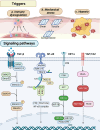


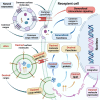
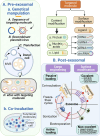
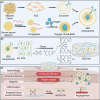
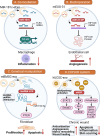

Similar articles
-
Exosomes derived from TSG-6 modified mesenchymal stromal cells attenuate scar formation during wound healing.Biochimie. 2020 Oct;177:40-49. doi: 10.1016/j.biochi.2020.08.003. Epub 2020 Aug 12. Biochimie. 2020. PMID: 32800897
-
Exosomes and microRNAs: insights into their roles in thermal-induced skin injury, wound healing and scarring.Mol Genet Genomics. 2024 Sep 25;299(1):89. doi: 10.1007/s00438-024-02183-w. Mol Genet Genomics. 2024. PMID: 39317785 Review.
-
Insights into optimizing exosome therapies for acute skin wound healing and other tissue repair.Front Med. 2024 Apr;18(2):258-284. doi: 10.1007/s11684-023-1031-9. Epub 2024 Jan 13. Front Med. 2024. PMID: 38216854 Free PMC article. Review.
-
Exosomes and Their Bioengineering Strategies in the Cutaneous Wound Healing and Related Complications: Current Knowledge and Future Perspectives.Int J Biol Sci. 2023 Feb 27;19(5):1430-1454. doi: 10.7150/ijbs.80430. eCollection 2023. Int J Biol Sci. 2023. PMID: 37056923 Free PMC article. Review.
-
Therapeutic potential of exosomal lncRNAs derived from stem cells in wound healing: focusing on mesenchymal stem cells.Stem Cell Res Ther. 2025 Feb 11;16(1):62. doi: 10.1186/s13287-025-04200-0. Stem Cell Res Ther. 2025. PMID: 39934913 Free PMC article. Review.
Cited by
-
Recent advances in engineered exosome-based therapies for ocular vascular disease.J Nanobiotechnology. 2025 Jul 19;23(1):526. doi: 10.1186/s12951-025-03589-3. J Nanobiotechnology. 2025. PMID: 40684186 Free PMC article. Review.
References
Publication types
MeSH terms
Grants and funding
LinkOut - more resources
Full Text Sources
Medical

